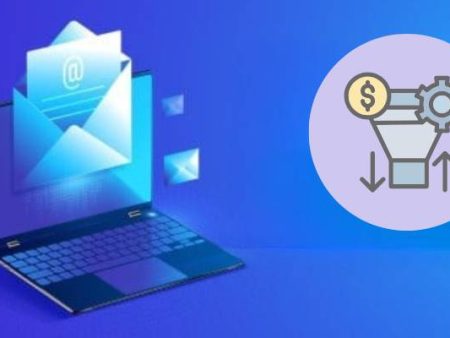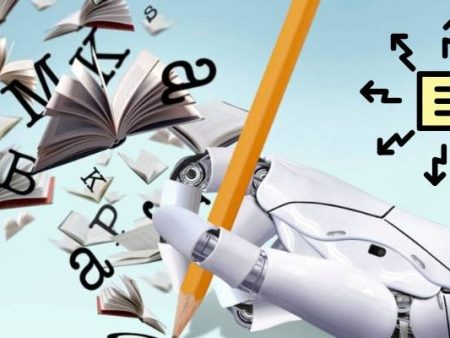If you’ve been anywhere near marketing in the last couple of years, you’ve heard the whispers: AI is taking over. It’s drafting emails, generating blog posts, even spitting out catchy headlines.
But when it comes to newsletters—a channel that’s supposed to feel personal, almost intimate—the question becomes unavoidable.
Is AI in newsletter copywriting giving us personalization at scale, or are we just automating ourselves into an inbox wasteland of robotic spam?
I’ll be honest. I’ve wrestled with this question. I’ve tested AI tools that amazed me with how quickly they could churn out subject lines written in 10 different styles.
But I’ve also seen outputs so bland, so cookie-cutter, that they felt like the digital equivalent of an unsolicited flyer under your windshield wiper.
So, in this piece, I want to dig into both sides of the debate—warts and all. The promise. The pitfalls. The stats. And yes, the dark side that nobody wants to admit out loud.
Why Newsletters Still Matter (Yes, Even in 2025)
Let’s pause here. Some people shrug off newsletters as outdated, drowned out by social media and TikTok trends. But the numbers tell a different story.
According to Statista, the number of global email users is expected to hit 4.73 billion by 2026. That’s nearly 60% of the world’s population.
Closer to home, Litmus reports that email marketing has an average ROI of $36 for every $1 spent. That’s not just healthy—it’s staggering.
And unlike social platforms, you own your email list. No algorithm can suddenly hide your content.
That’s why newsletters remain a core channel for building trust, driving conversions, and keeping a brand’s voice consistent.
But here’s the rub: inboxes are overflowing. If you’re going to cut through the noise, you need copy that feels personal, relevant, and worth opening. That’s where AI swoops in with promises of scale.
How AI Copywriting Slips Into the Newsletter World
So, what exactly are we talking about when we say “AI in newsletter copywriting”? At its most basic, it’s using machine learning tools to generate or optimize parts of your campaign.
- Drafting intro paragraphs or full editions.
- Suggesting multiple subject lines written for better open rates.
- Personalizing content based on customer segments.
- Running a/b testing with different tones, lengths, or CTAs.
And I’ll admit, the efficiency is seductive. What used to take a content team days can now be outlined in minutes. I’ve had AI generate 20 headline options in the time it took me to sip coffee.
But here’s where I stop myself. Speed doesn’t always equal quality. Just because a machine can crank out copy doesn’t mean it resonates—or respects the audience.
The Case for Personalization at Scale
Now, let’s give AI its due. Done right, it can be a powerful ally.
Smarter Segmentation
Imagine sending a newsletter to 10,000 subscribers. Manually tailoring each message is impossible.
But AI can crunch behavioral data—like purchase history, click-through patterns, or browsing habits—and suggest personalized copy that speaks to each group. That’s not spam. That’s relevance.
A Salesforce study found that 66% of customers expect companies to understand their unique needs and expectation. That expectation isn’t going away. And frankly, humans alone can’t deliver at that scale.
Dynamic Subject Lines
When I ran a campaign for a B2B client, we tested AI-generated subject lines written against human ones. The AI versions weren’t perfect, but some were refreshingly creative. One line in particular boosted open rates by 12%. That’s the kind of lift marketers dream about.
A/B Testing With AI
Here’s where it gets fun. Imagine running a/b testing with not just two subject lines, but 20, all generated by AI, then letting machine learning identify the winner in real-time.
That’s personalization at speed and scale, something almost impossible to do without automation.
So yes, AI has the potential to take newsletters to new heights—when used thoughtfully.
The Dark Side: When Efficiency Turns Toxic
But we can’t have an honest conversation without addressing the dark side. Because it’s real.
- Robotic Spam at Scale
The biggest risk? Treating AI as a spam factory. Instead of thoughtfully crafted messages, we end up with AI blasting generic content to massive lists. It might be faster, but it destroys trust. One bad experience and subscribers hit “unsubscribe” or worse, “report spam.”
- Losing the Human Voice
I’ve read AI-generated drafts that sounded fine… until I realized they had no soul. No quirks, no subtle humor, no emotional depth.
Newsletters are supposed to feel like they come from a person, not a content mill. And yet too often, that’s exactly what AI produces when left unchecked.
- Ethical Red Flags
Then there’s the issue of data. AI thrives on personalization, but how much data are you willing to feed it? At what point does personalization tip into creepy surveillance?
Consumers are already wary—63% say companies don’t use their data responsibly. Misuse it, and your brand risks serious backlash.
My Personal Struggles (and Small Victories) With AI in Newsletter Copywriting
Let me share a personal story. I once tested AI to generate intros for a newsletter I’d been writing for months.
The output? Surprisingly smooth. It mimicked my tone almost perfectly. For a second, I felt… replaced.
But then I read it again. It lacked the small imperfections I usually slip in—like the way I sometimes ramble before making my point, or the offbeat cultural reference I use to make readers smile.
That’s when it hit me: AI can imitate my style, but it can’t replicate the lived experience behind it.
Still, I used parts of that draft. It saved me time. It gave me a springboard. That was a small victory: letting AI handle the scaffolding, while I brought the color.
How AI Copywriting Can Actually Humanize Newsletters
Strange as it sounds, I think AI has the potential to make newsletters feel more human—if we guide it properly.
- Human-in-the-loop editing: AI drafts, humans refine. That balance keeps the soul intact.
- Empathy prompts: Instead of generic commands, feed AI emotional cues: “Write an empathetic intro for readers feeling overwhelmed at work.” You’d be surprised how much warmer the output gets.
- Layering in imperfections: Don’t smooth out every odd sentence. Sometimes those quirks are what make writing feel alive.
The paradox is this: the more we treat AI like a co-writer rather than a replacement, the more human our newsletters can actually feel.
Practical Tips: Using AI Without Losing Your Voice
If you’re tempted to dive in, here are some practical lessons from my experiments:
- Start Small
Use AI to brainstorm subject lines or CTAs first, before handing over full drafts. Build trust gradually. - Edit Ruthlessly
Never send AI copy unedited. That’s where the robotic feel sneaks in. - Blend Data With Empathy
Let AI handle the segmentation and timing, but you decide the emotional core of the message. - A/B Testing With Guardrails
Run a/b testing with AI-generated lines, but don’t blindly trust the winners. Factor in brand tone and audience fit.
The Future of AI in Newsletter Copywriting
So where does all this lead? I suspect we’ll see a hybrid future. AI will get better at mimicking tone, even inserting humor and storytelling.
But audiences will get sharper at detecting insincerity. The brands that thrive will be those who balance scale with authenticity.
Picture this: AI drafting a personalized newsletter for each subscriber, but humans curating the emotional themes. That’s personalization at scale—not robotic spam.
Final Thoughts: My Honest Take
So, is AI in newsletter copywriting personalization at scale or robotic spam? The frustrating, honest answer is: it’s both.
It depends on how we use it.
If we chase efficiency without empathy, we’ll drown inboxes in lifeless content. But if we use AI as scaffolding—speeding up drafts, expanding options, handling segmentation—while humans inject voice, emotion, and authenticity, we’ll unlock something powerful.
Here’s my personal stance: AI should never be the author of your newsletter. But it can be a damn good assistant.
It can spark ideas, handle grunt work, and let you focus on the part that really matters—connecting with people.
Because newsletters, at their best, aren’t about open rates or click-throughs. They’re about a voice reaching through the noise to say: I see you. I get you. Here’s something that matters to you.
And no matter how advanced the tools get, that human heartbeat is the one thing they can’t automate.


